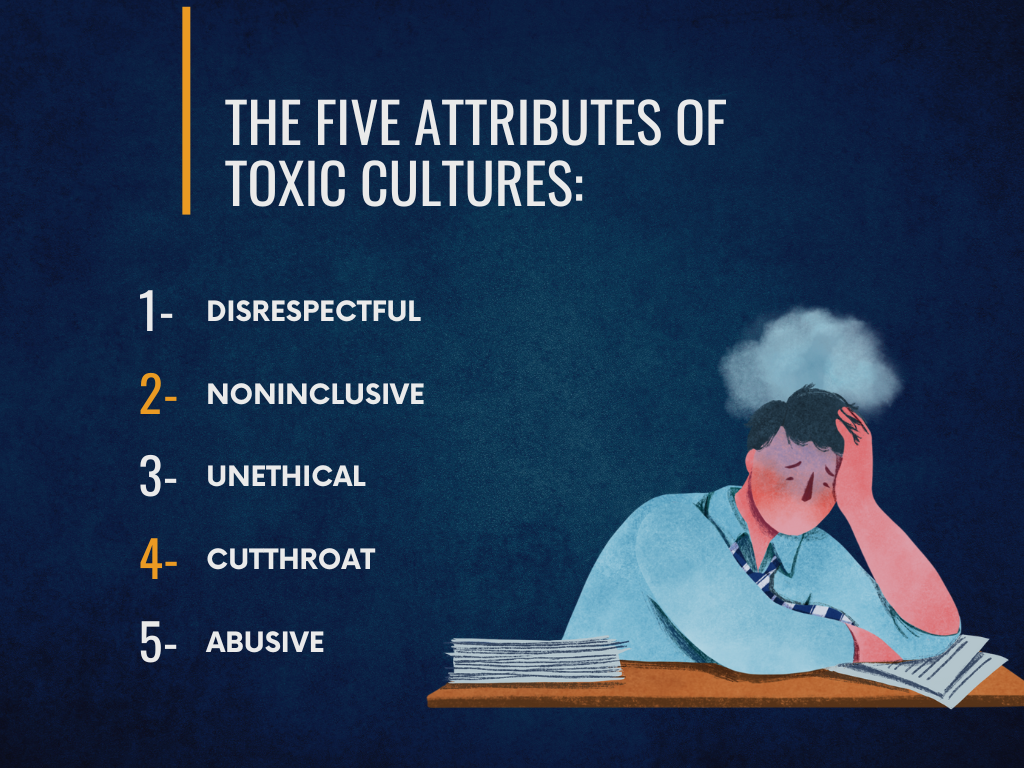
“January Blues” at Work
For some employees, it manifests as a seasonal dip in productivity and motivation. But for others, January Blues hints at more profound challenges within the workplace.


CEO and Founder of Home Grounds

Professional Growth Specialist

VP of Human Capital at CAKE.com

HR Specialist & the Managing Director of First Aid Course Leicester

Co-founder & CEO of Nestor

Director of Marketing of Flex HR

Owner of Number Plates 4 You

MD & Teaching Psychiatrist at Columbia University
Every company dreams of a harmonious workplace where collaboration flourishes, and success is a team effort. However, the reality that many encounter is less than ideal: a toxic work culture.
For a large portion of Americans, work is filled with negativity and distrust, leading to trends like Bare Minimum Mondays and Lazy Girl Jobs, where employees mentally check out and put forth minimal effort.
Recognizing the gap between the ideal collaborative environment and the harsh reality of toxic work cultures, it becomes imperative to address the question: Can a hostile corporate atmosphere be transformed into a positive one?
Even more importantly, what steps need to be taken to fix a toxic work culture?
In this article, we explore how business leaders and HR professionals can identify and repair a “broken” work culture.
“Toxic” has become one of those words that can get tossed around a lot, especially in the context of the workplace.
The increased emphasis on employees’ mental health and demand for work-life balance in the last few years meant that the topic of toxicity within work environments garnered a lot of attention in the media.
In 2023, Google saw record interest in the search term “toxic work environment”, higher than at any time since 2004. Similarly, toxic corporate work culture was named as the top leading factor for the Great Resignation, according to an analysis by MIT Sloan Management Review, and is 10.4 times more important than compensation in predicting a company’s attrition rate.
McKinsey’s study further highlighted this issue, showing that toxic workplace behavior was the single biggest reason why employees were fleeing jobs and struggling with stress, burnout, depression, and anxiety.
With news of toxic bosses, toxic job descriptions, and toxic work environments becoming increasingly common, it’s signaling that America is experiencing an epidemic of toxicity.
The numbers point to just how prevalent toxic work cultures are, with nearly one in five saying they experience toxic workplaces, according to APA’s latest 2023 Work in America survey.
Interestingly, the same study revealed that specific workforce demographics experience higher levels of toxicity.
For example, women (23%) are more likely to report having a toxic workplace than men (15%), those with disabilities more than those without (26% and 16%, respectively), and employees working in person more than those working fully remotely (22% and 13%, respectively).
While there’s no clear definition of what makes a work culture toxic, there are certain toxic work culture examples that people associate with it.
Researchers at MIT Sloan examined over 1.3 million Glassdoor reviews of Culture 500 companies to figure out what factors define a bad culture in the eyes of employees.
With these results, they were able to determine the five attributes of toxic cultures: disrespectful, noninclusive, unethical, cutthroat, and abusive.
Similarly, these traits are reflected in the experiences shared by various experts:
Through these toxic work culture examples, it’s clear that toxicity can manifest in different ways and in many work scenarios, making it hard to establish a universal definition.
However, the end result is that these behaviors always create an atmosphere where employees feel unappreciated, defeated, and unmotivated.

Perhaps the biggest enigma for many top leaders and HR professionals is how bad culture is developed in the first place. However, instead of searching for the source elsewhere, it’s time for leaders to look within.
Time and time again, leadership has consistently emerged as the most significant driver of toxic culture.
“Most of the time in a toxic workplace, these behaviors tend to stem from top leadership down, meaning a manager or higher level is influencing this behavior by demonstrating these actions themselves, which in effect trickles down to the employees”, explains Jamie Sieja, Director of Marketing of Flex HR.
A meta-analysis of thousands of research papers found that the most powerful predictor of toxic behavior in the workplace is how leaders behave.
In fact, leadership influences nearly ten times more whether an employee will encounter toxic behavior in the workplace compared to factors like the employee’s age or level of seniority.
Sarah Jeffries, Managing Director at First Aid Course Leicester, explains, “When leaders demonstrate disrespectful or unprofessional behavior, it sends a message that such conduct is acceptable within the organization.”
Other strong drivers of a toxic culture are dysfunctional social norms.
These are the social interactions and norms between coworkers, teams, and higher-ups.
The last driver of toxic work cultures is poor work design.
One hundred years of work design research has shown that several elements, such as heavy workloads and conflicting job demands, greatly influence toxic outcomes and contribute to how stressful jobs are.

Toxic work cultures have a myriad of negative implications, impacting not just employee well-being but also organizational performance. Increased healthcare costs, recruitment challenges fueled by negative word-of-mouth, and a disengaged workforce are just some of the consequences.
Recognizing this, companies have a strong motive to take decisive action and fix toxic cultures.
However, the path to detoxification is rarely straightforward. The first hurdle is recognizing the signs of a toxic work environment and acknowledging the problem, a step that can be surprisingly difficult for leaders.
Studies reveal a disconnect, with upper management far less likely to report toxicity compared to frontline workers and middle management.
This begs the question: how can leaders who stay within their own microcultures address an issue they might not fully experience themselves?
Clearly, introspection and accountability are crucial.
Leaders must be willing to confront their roles in fostering or failing to address toxic behaviors.
Simply removing bad apples or abusive managers will not fix a toxic culture. Toxicity can become deeply ingrained in an organization, perpetuated by poorly designed jobs and excessive workload, requiring a systemic approach to unrooting it.
In the end, there is no one-size-fits-all approach to fixing a toxic work culture, as each organization has its unique context and challenges.
When it comes to the topic of how to change toxic work culture, we turned to the opinions and practical advice from experts on the key drivers for addressing a toxic workplace: leadership, work design, and social norms.
Bogdan Apostol, Co-founder & CEO of Nestor, emphasizes the importance of prevention over mitigation regarding workplace toxicity.
“It all begins with people in key positions leading by example,” Apostol asserts. He underscores the need for these leaders to exhibit professionalism, empathy, and respect – qualities they expect from their employees.
Just like how employees can upskill and train in areas they lack, leaders and managers can take training specific to their roles to combat toxicity effectively. In fact, as much as 43% of employees believe this type of coaching can fix a toxic culture and inspire other employees to change their behaviors.
However, the responsibility for nurturing a positive work culture extends beyond leadership to include the HR department.
“For HR hiring managers, it is especially important to emphasize among their team members that it’s not only about hiring and promoting top performers, but also about selecting great people, who receive the approval and support to further develop, have demonstrated an inclusive mentality, and look out for the interests of others too.”
As Jamie Sieja points out, “It is up to HR and leadership to stay ahead of any possible toxic working environments.” Sieja suggests frequent team meetings for check-ins and building rapport.
“Any individual that feels they are in a toxic situation should report it to their HR representative or department immediately,” Sieja adds, emphasizing the need for clear communication of core values and expectations.
Steve May, Owner of Number Plates 4 You, shares his approach to creating a balanced work environment and avoiding a workaholism culture.
“I implemented flexible working hours and encouraged open communication. I made sure employees knew it was okay to prioritize their well-being and family life. Additionally, we restructured tasks and deadlines to distribute the workload evenly, preventing the need for constant overtime,” May shares.
Dr. Ryan Sultan, MD, a Teaching Psychiatrist at Columbia University, emphasizes the significant impact leaders have on the mental health of their employees.
He advises to “recognize that employees’ mental health is as important as their physical health” and provide resources like Employee Assistance Programs (EAPs). He also recommends promoting a culture of respect to facilitate respectful interactions and address any harassment.

Biljana Rakic discusses the approach to socially toxic environments by changing mindsets without directly pointing out “toxic behaviors.”
Rakic shares one successful intervention: “One solution we have found to that problem is having a clique that had formed around gossiping about a newcomer participating in the new employee’s integration activities. We had the team manager task the socially dominant members of the clique with helping this new hire become acclimated to the company culture.”
With this strategy, they transformed negative behaviors into supportive ones.
In summary, addressing a toxic work culture requires a comprehensive approach involving leadership, thoughtful hiring, mental health prioritization, flexible policies, and proactive HR strategies.
These expert insights form a roadmap for organizations aiming to nurture a healthier and more productive work environment.
Ultimately, measuring success in the modern workplace extends far beyond the bottom line. True success lies in nurturing an environment where toxicity is replaced by respect and well-being, improving the mental health of its employees.
Success also shows up in better work performance, fewer people leaving their jobs, and employees being happy at work, showing improved job satisfaction in surveys.
These metrics give us a holistic picture of an organization’s true health and effectiveness, reminding us that success isn’t just measured by what you achieve but by who you do it with.
Senior Content Writer at Shortlister
Browse our curated list of vendors to find the best solution for your needs.
Subscribe to our newsletter for the latest trends, expert tips, and workplace insights!

For some employees, it manifests as a seasonal dip in productivity and motivation. But for others, January Blues hints at more profound challenges within the workplace.

The conversation on neurodiversity in the workplace is expanding, but significant improvement has yet to be made. What’s the next strategic move for employers to drive progress?

Entering the workforce amidst a mental health crisis, Gen Z pushes for better employee well-being. What can employers do to address this issue effectively?

Postpartum and peripartum depression (PPD) is the most common mental disorder experienced after childbirth. So, what happens while you’re in the midst of it or recovering, and you’re due to return to work?
Used by most of the top employee benefits consultants in the US, Shortlister is where you can find, research and select HR and benefits vendors for your clients.
Shortlister helps you reach your ideal prospects. Claim your free account to control your message and receive employer, consultant and health plan leads.